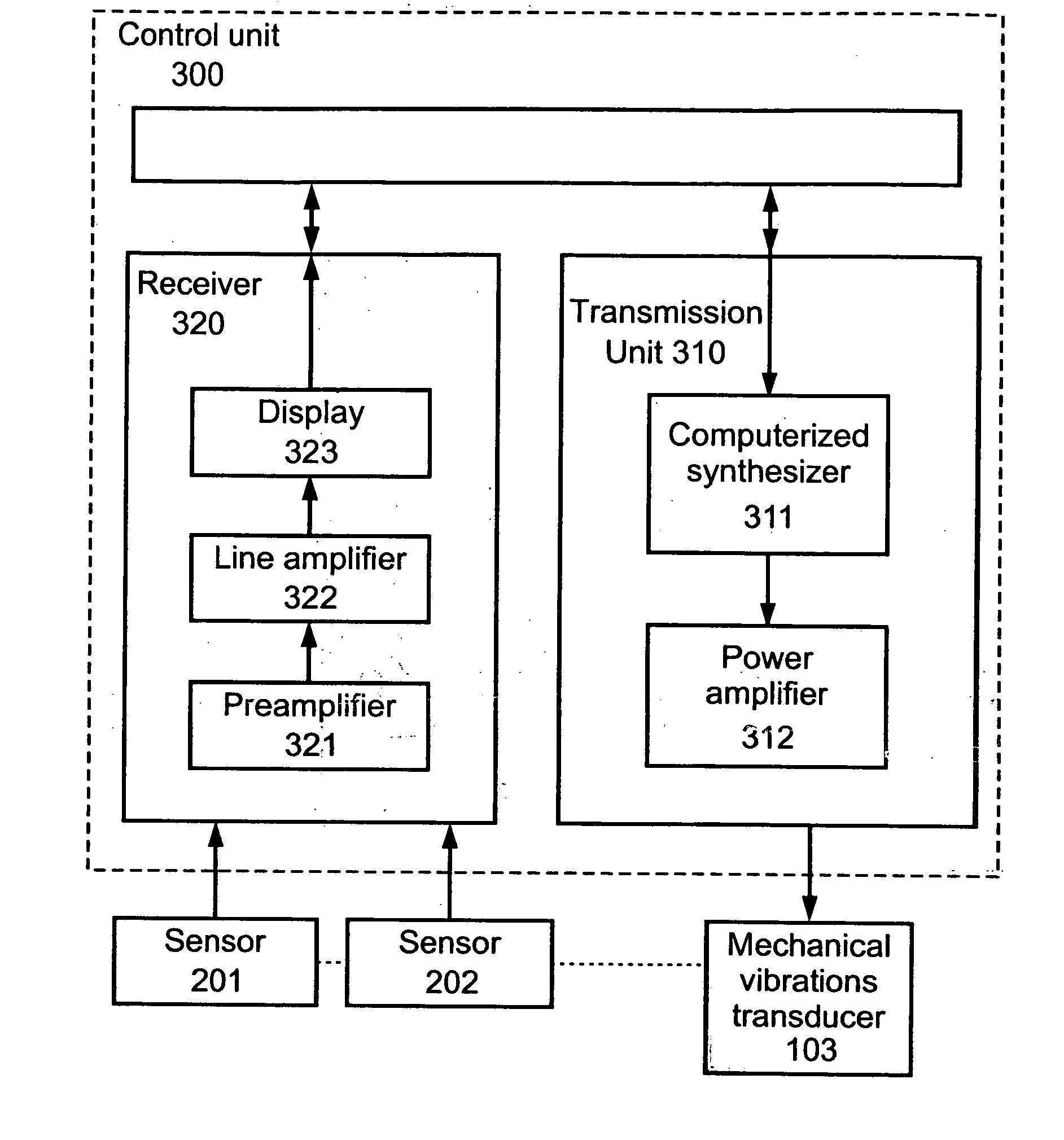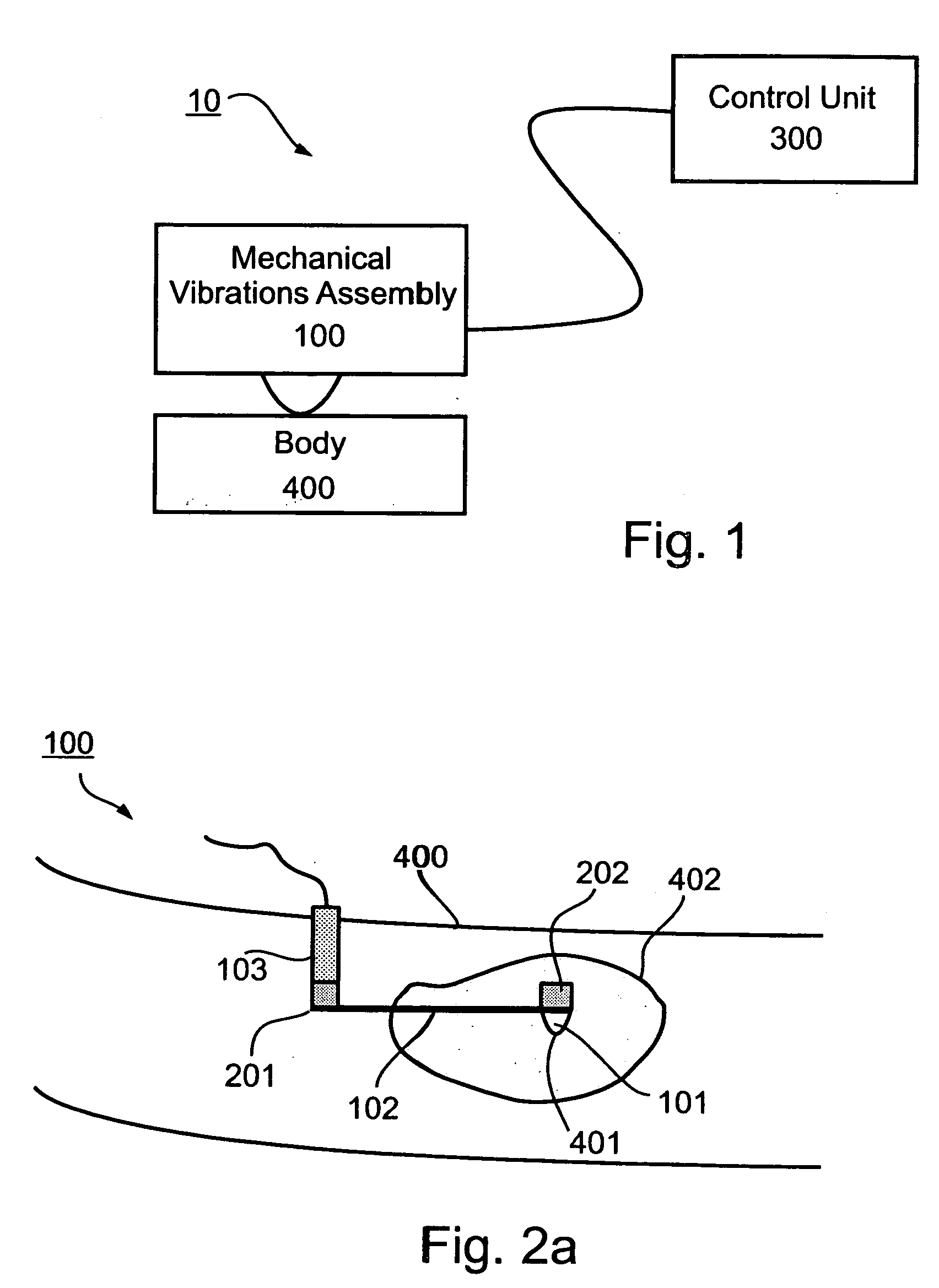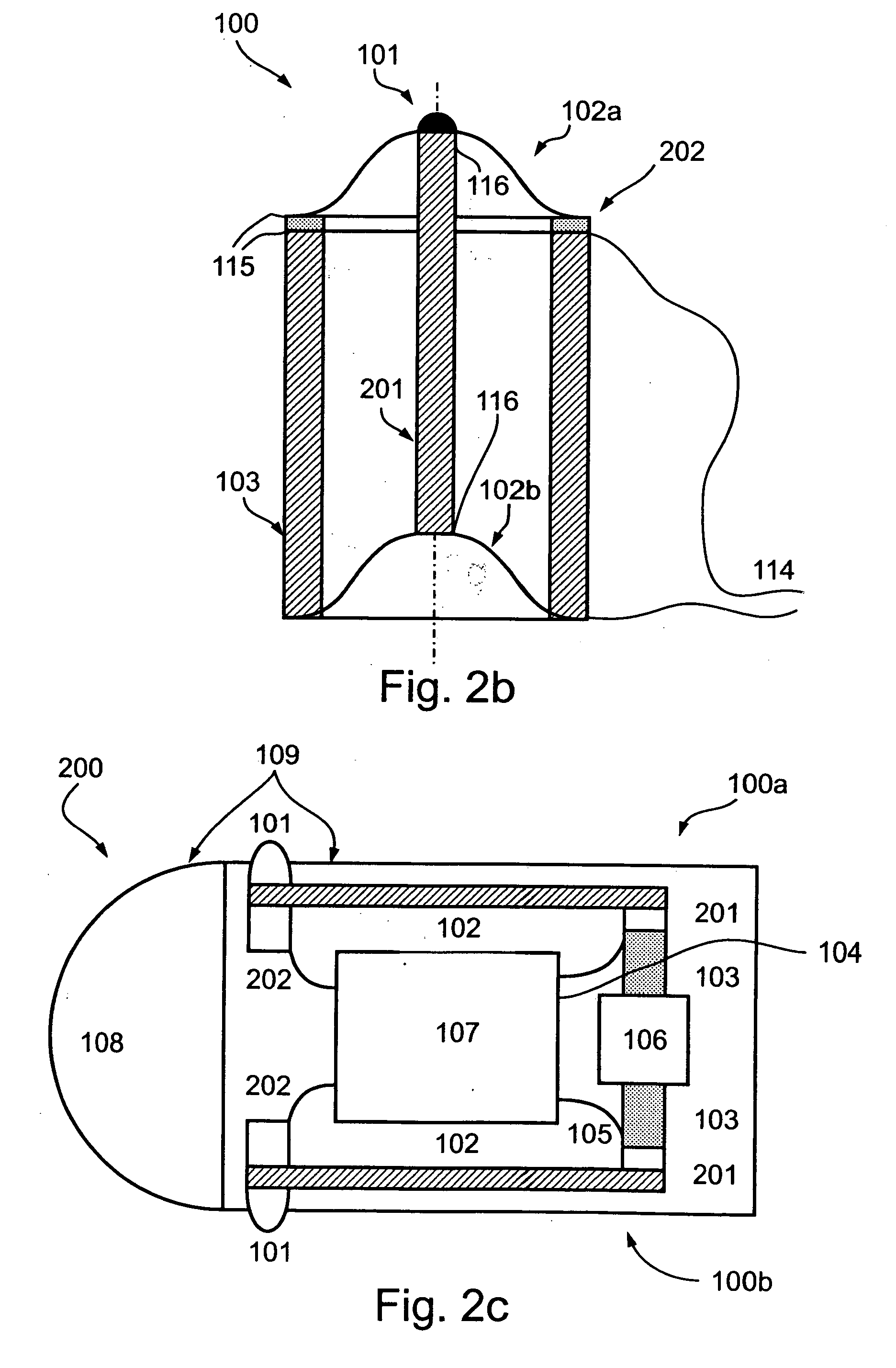Method, system and device for tissue characterization
a tissue characterization and tissue technology, applied in the field of medical systems, methods and devices, can solve the problems of cerebrovascular accident (cva), complete occlusion of inflicted arteries, wall tends to shed flakes downstream, etc., and achieve the effect of reducing the effect of environmental nois
- Summary
- Abstract
- Description
- Claims
- Application Information
AI Technical Summary
Benefits of technology
Problems solved by technology
Method used
Image
Examples
example 1
One Dimensional Model
The body is a continuous mass system with viscoelastic properties. The present example is a one dimensional model of a certain region of the body. The model comprises a system of a plurality of degrees-of-freedom each degree-of-freedom is constrained to a one dimensional motion.
FIG. 4 illustrates the system where each degree-of-freedom is represented by a displacement, x, mass, m, connected to a spring having a spring constant, k, and is subjected to a dissipative force having a damping factor, c. The leftmost mass of the system is connected to a Mechanical Linkage Device (MLD), consisting of a soft spring, k0, a small mass, m0, and a table which vibrates harmonically with frequency ω. Hence, the model is a one dimensional many degree of freedom, damped and forced harmonic oscillator.
The degrees-of-freedom of the system represent the mass lumped parameters of the body, where the rightmost mass represents an arterial tissue which is to be characterized. As t...
example 2
A Two Dimensional Model for a Peripheral Vascular Case
The present example is a two dimensional model which simulates a continuous mass system of an artery, a plaque (if exist in the artery) and the adjacent skin. The model comprises a system of a plurality of particles each particle has two degrees-of-freedom. Thus, a system of M particles has N=2M degrees-of-freedom.
Reference is now made to FIG. 13, showing an artery carrying a plaque which is located on the wall of the artery. The artery is below the skin of the subject which is shown as a gray area in FIG. 13. The two dimensional model below simulates the artery along a perpendicular cross section designated “A-A” in of FIG. 13.
FIGS. 14a-d are an illustration of the two dimensional model which consists of a plurality of particles. FIG. 14a shows the particles, each represented as a circle in FIG. 14a. FIG. 14b shows coupling of a certain particle designated 17, with its eight neighbours, designated 1, 2, 3, 16, 18, 31, 32 an...
example 3
A Two Dimensional Model for a Dermal or Sub-Dermal Case
The present example is of a two dimensional model which simulates a continuous mass system of a dermal or sub-dermal lesion surrounded by benign skin tissues. The model comprises a system of a plurality of particles each particle has two degrees-of-freedom. The interactions between the particles and the applied driving force are as in Example 2 and therefore governed by the same set of equations.
Reference is now made to FIG. 23, showing a portion of a suspected region of a skin. The benign region is shown as a bright area in FIG. 23 and the lesion to be characterized is shown as a dotted area within the bright area.
The mechanical properties of a dermal or sub-dermal lesion differ significantly from a benign skin tissue: the former is known to be much softer than the latter. In this example the suspected region of a skin was simulated by a system comprising 451 particles (a 11×41 matrix), the parameters of 15 of which (a 3×...
PUM
 Login to View More
Login to View More Abstract
Description
Claims
Application Information
 Login to View More
Login to View More - R&D
- Intellectual Property
- Life Sciences
- Materials
- Tech Scout
- Unparalleled Data Quality
- Higher Quality Content
- 60% Fewer Hallucinations
Browse by: Latest US Patents, China's latest patents, Technical Efficacy Thesaurus, Application Domain, Technology Topic, Popular Technical Reports.
© 2025 PatSnap. All rights reserved.Legal|Privacy policy|Modern Slavery Act Transparency Statement|Sitemap|About US| Contact US: help@patsnap.com



